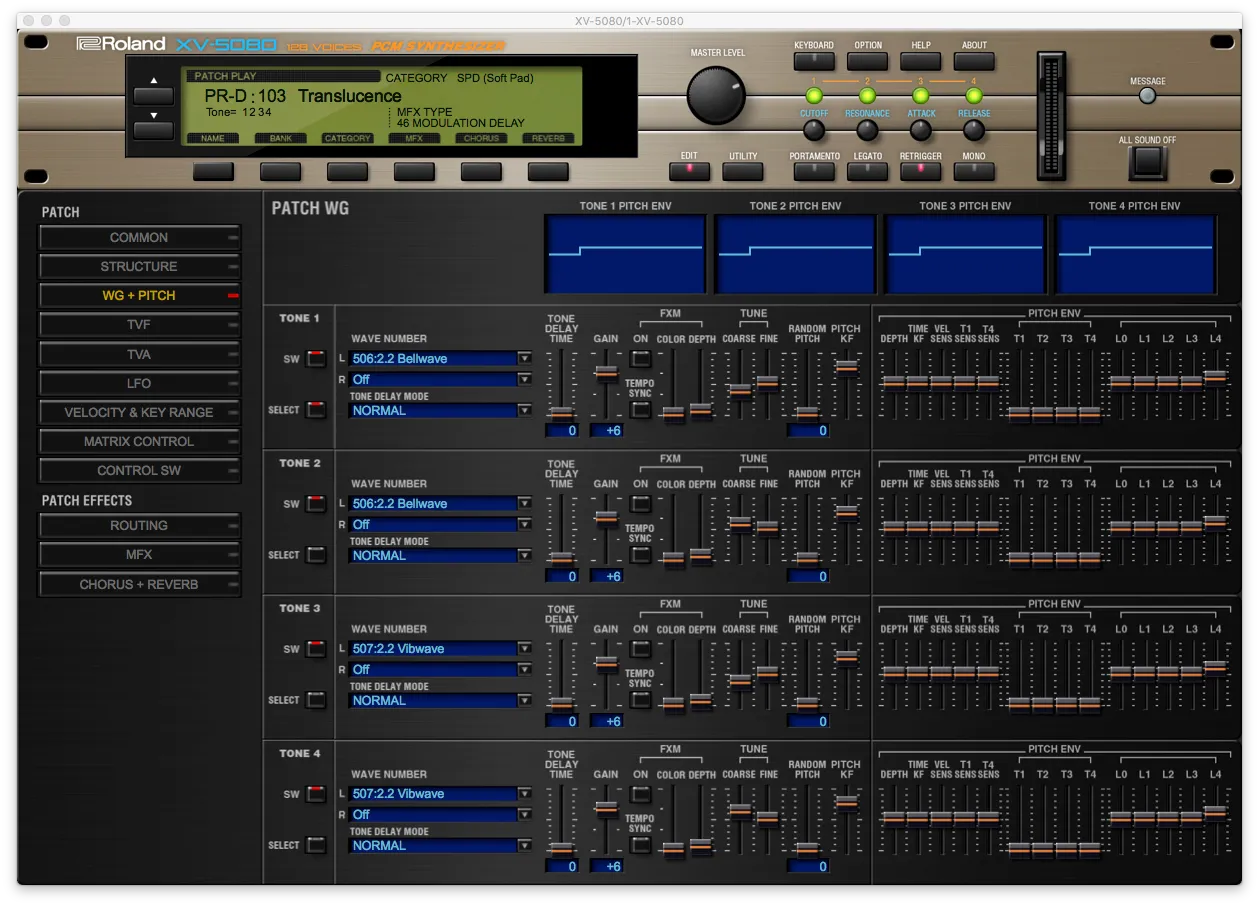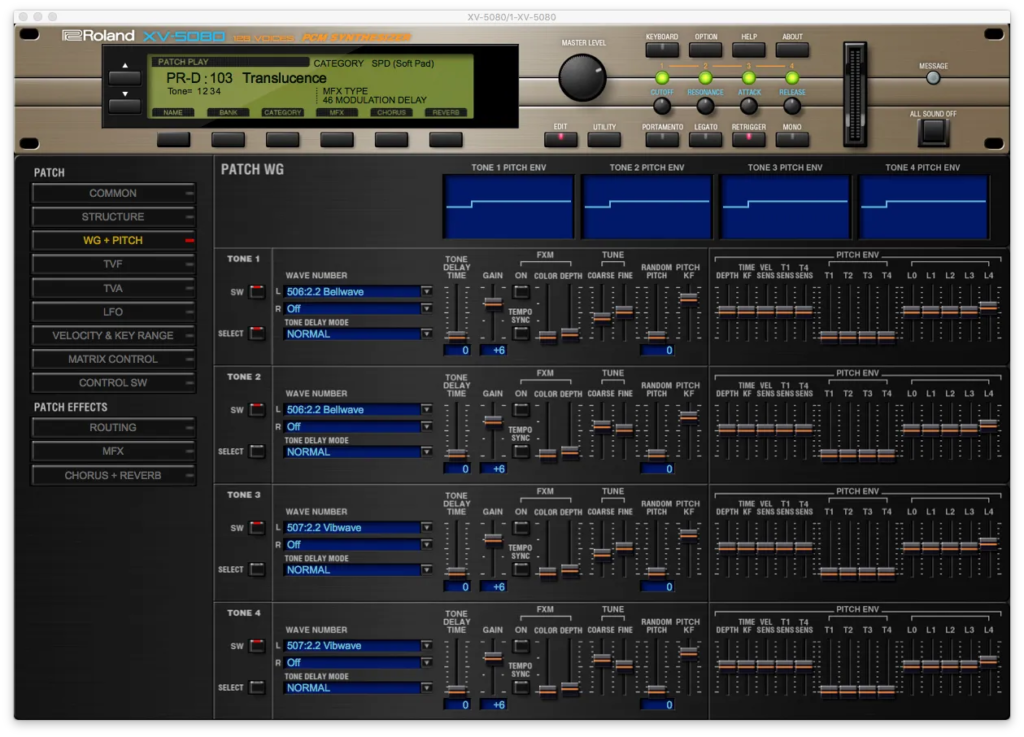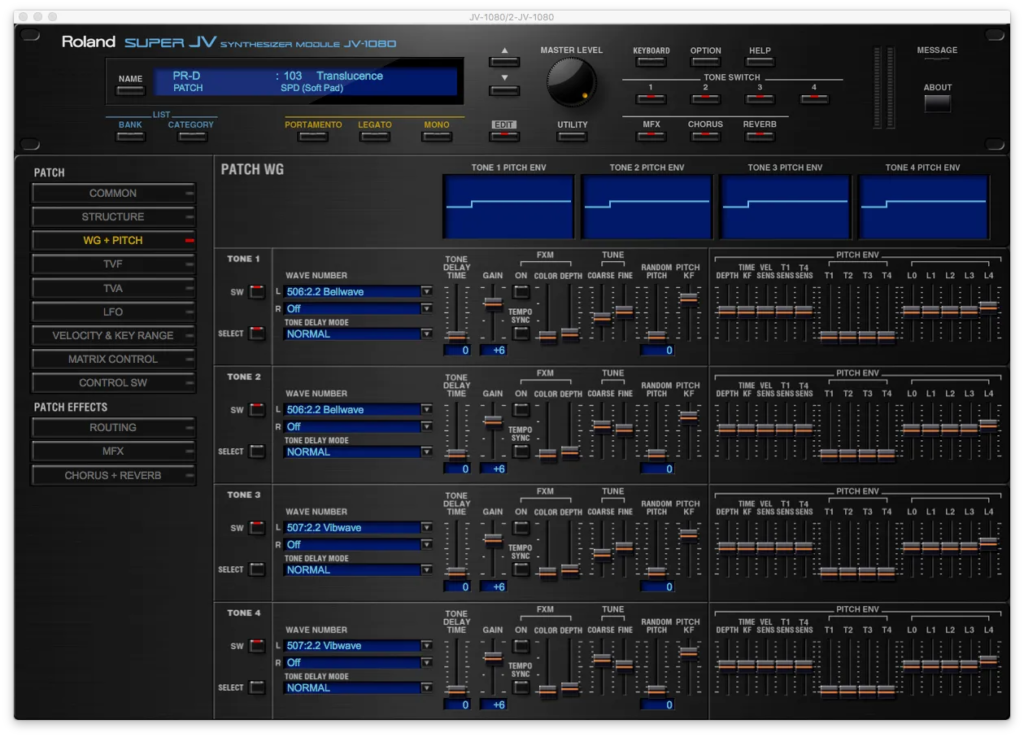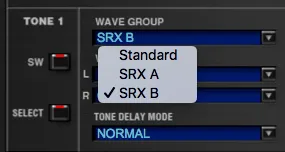
Roland Cloud XV-5080

Two years ago, Roland Virtual Sonics added the Cloud version of the Roland JV-1080 as a plugin to their Legendary catalogue. That one proved to be a lot more than just a software clone of the original JV-1080. So when the Roland Cloud team this Holiday Season released a VST, AU and AAX version of the XV-5080 my hope was set rather high.
If you’re interested, I did a rather lengthy blog post about the Cloud JV-1080 compared to the original hardware versions of the JV-1080/2080 and the XV-3080/5080. That post might be a good start before you continue…
Heritage
If you’re not familiar with the XV-5080 it’s the top-of-the-line rack module from Roland prior to the release of the Integra7. The XV-5080 came with all the waveforms from the JV-1080/JV-2080 and a selection of waveforms from the JD-990, the Super JD. It had twice the number of voices and over 900 presets. It could also be fitted with no less than four SRX expansion boards and an additional four SR-JV80 boards. The front panel had a memory card reader from which your own samples could be loaded. When it was released back in year 2000, it had state of the art built-in effects and it had an amazing sound. This was the work horse in probably every studio around the world.

Comparing the JV-1080 And the XV-5080
Comparing the XV-5080 plugin with the hardware unit itself will reveal more differences than if we compare it the software version of the JV-1080. And that’s a bit puzzling actually. Bear with me and I’ll explain from my own point of view.

Let’s stay within the software realm and leave the hardware unit for a bit. The software versions doesn’t really differ that much at all. Both have the same 1,083 waveforms, the same 78 different multi effects, the same 3 choruses and, you guessed it, the same 5 reverb algorithms. Even the edit screens look the same (see the attached screenshots to the left). This might not be too surprising since Roland also use them for the SRX expansion plugins as well and that makes it familiar and also makes editing easier. But they also sound almost identical.

At the bottom are a couple of audio files and I encourage you (just for fun, it’s not a competition) to comment on this post and tell me which is which — if you can tell them apart. I’ve also thrown in a joker and recorded my hardware JV-2080 module so you can hear the difference.
To me the Cloud XV-5080 is merely just some (okay, a lot of) new presets but in a different plugin with an updated front panel compared to the Cloud JV-1080.
So, What Are the Differences?
The first difference is, of course, the looks. Roland has done a fantastic job recreating the look and feel of the front panel (yes, I know a lot of buttons are missing and the card reader has been flipped and so on) and it can’t be mistaken for which synthesiser module they’re emulating. The heritage is certainly and clearly there.
The number of presets have grown from 512 patches and 8 drum kits in the JV-1080 to 896 patches and 16 drum kits. Not included in either software versions of the JV-1080 and the XV-5080 are the GM and GM2 banks. I guess General MIDI actually did die one day a long time ago after all. Who would have thought?
Missing Features
Turning our heads towards the hardware unit again and comparing it with the software we’ll find some missing features.
The software version of the XV-5080 can’t “load up to 128MB of Roland, Akai, .WAV and AIFF samples” as the original hardware version could. Roland have only cloned the Tone section of the Wave Generator page and skipped the Multi-Partial Patches. While Tones are composed of two waveforms, Partials may contain up to four samples (Wave data).
This was one of the features I was looking forward to in the software version and it’s the main reason I still want to own the hardware version of the XV-5080 even though I already have a fully expanded JV-2080 (including a Dojoe — a custom built memory card with the capacity equivalent to 8 simultaneous M-512E cards). I can still use my V-Synth GT to load samples, but it handles them differently from the XV-5080’s Partial mode.
Another benefit of having the JV-2080 as hardware in my rack next to me is it’s ability to add up to 8 SR-JV80 boards. SR-JV80 series is the predecessor to the revamped SRX board introduced in 2000 alongside the XV-88 keyboard and the XV-3080 and XV-5080 rack modules. Both these boards add additional waveforms, patches, performances and rhythms (drum kits) to the synthesiser giving the user a plethora of options and combinations. The SR-JV80 came with 8MB ROM chips while the SRX came with a whoping (remember that this was almost 20 years ago) 64MB ROM per board.

Roland have released nine of the SRX expansion boards as eight separate plugins in now its own category; Brass, Dance Trax (Supreme Dance and Platinum Trax), Electric Piano, Keyboards (which is the Ultimate Keys board), Orchestra, Strings, Studio and World. What I’d like to see in an upcoming update is the ability to combine the JV-1080 or XV-5080 with any or all of the SRX expansions — just as you could in the hardware. So instead of Standard and SRX (see the screenshot above) I would like it to say Standard, Keyboards, World and so on in the list so I can pick and choose, mix and match, and get completely lost in the wonderful world of sound design. I always thought the real power of these hardware modules was the ability to expand them beyond your imagination and thus combine waveforms from different SR-JV80 or SRX boards at the same time.
Summary
The XV-5080 is a welcomed addition to the already amazing catalogue of Roland Cloud instruments. It sounds just as good as the JV-1080 plugin; wide, warm and alive. Having 900 presets at your fingertips is a great way to start any song, and since this is more or less a replica of the real deal you can edit every single preset to your own liking. Playing it is inspiring and it will hopefully keep you occupied for a long time. I will definitely use it a lot in my upcoming productions.
And finally, the…
…Sound Engine Comparison
Here you’ll find the three audio recordings I wrote about above:
- Synth A, https://www.dropbox.com/s/89rltjwx2cl72jw/A.aif?dl=0
- Synth B, https://www.dropbox.com/s/8w34hr5w7zq5yxo/B.aif?dl=0
- Synth C, https://www.dropbox.com/s/2ghl2njy20k6ngz/C.aif?dl=0
Now it’s time for you to guess. Which is which? You can choose from the following:
- JV-1080 (software)
- JV-2080 (hardware)
- XV-5080 (software)
Comment below, if you like, and tell me which of the three you prefer, and take a guess which of the recordings that correspond with the three different sources. No pressure! It’s just for fun, and well, I’m actually quite curious too.
Leave a Reply